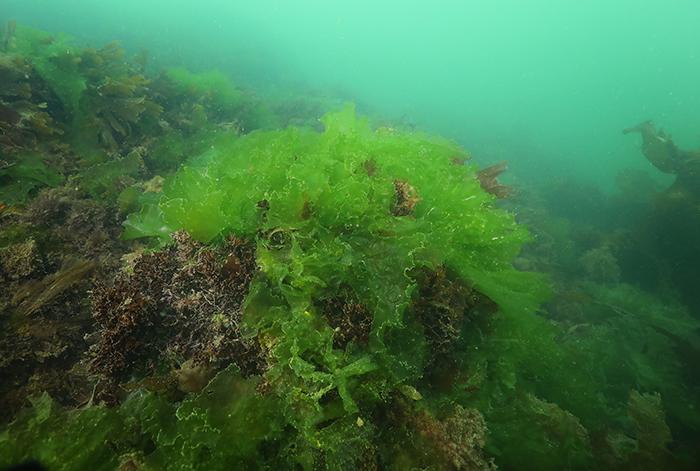
Credit: Wilfried THOMAS, Service Mer, Station Biologique de Roscoff (CNRS/Sorbonne université)
Ulvan is the principal component of Ulva or “sea lettuce” which causes algal blooms (green tides). Scientists at the Station Biologique de Roscoff (CNRS/Sorbonne Université) and their German and Austrian colleagues have identified a marine bacterium whose enzymatic system can break down ulvan into an energy source or molecules of interest for use by the agrifood or cosmetics industries. Twelve enzymes have thus been discovered and they constitute as many tools that could transform this under-exploited polysaccharide into a renewable resource. This work is published on July 8 in Nature Chemical Biology.
Ulva are edible green macroalgae that are present naturally along our coastlines (“sea lettuce”). These algae can suddenly proliferate because of an excess of nutrients resulting from human activities and cause the deposit of enormous masses on beaches. These phenomena, or green tides, have a detrimental impact on the quality of the environments concerned and on tourism.
However, sea lettuce constitutes a reservoir of biomolecules with promising properties. This is the case for ulvan, the principal monosaccharide found in the cell wall of Ulva. However, the biotechnological exploitation of ulvan is currently hindered by a lack of understanding of its degradation mechanisms.
In this context, an international consortium involving the Laboratoire de Biologie Intégrative des Modèles Marins at the Station Biologique de Roscoff (CNRS/Université Paris-Sorbonne), the Universities of Bremen and Greifswald (in Germany) and Vienna Technical University (Austria) has discovered and characterised the complete degradation pathway for ulvan in the marine flavobacterium Formosa agariphila. In this bacterium, twelve enzymes act sequentially to convert ulvan into fermentable monosaccharides that could serve as a basis for the production of bioethanol. The French team in the consortium focused notably on a particular type of these enzymes, sulfatases, and determined their 3D structures.
As well as the production of energy, these enzymes can also obtain other types of bioactive molecules that are more complex and have a higher added value than simple fermentable monosaccharides. This work therefore opens the way to the biotechnological exploitation of ulvan, particularly by the agrifood and cosmetics industries, transforming a biomass considered as “detrimental” into a sustainable resource.
###
Media Contact
Alexiane Agullo
[email protected]
Original Source
https:/
Related Journal Article
http://dx.




